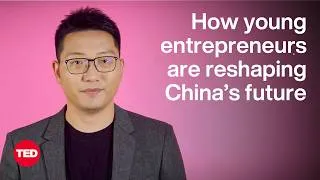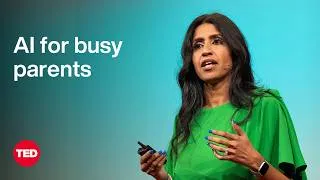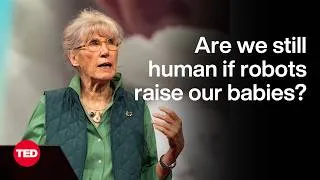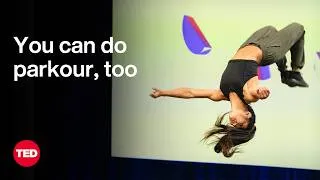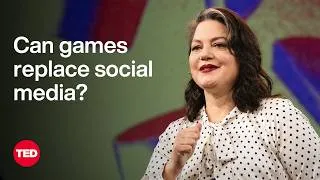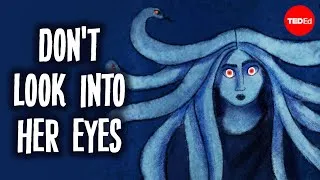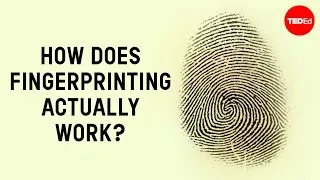请双击下面的英文字幕来播放视频。
翻译人员: Ni Zhang
校对人员: Xiaoqiao Xie
00:15
This is actually a painting
0
15260
3000
这实际上是一幅画,
00:18
that hangs at the Countway Library at Harvard Medical School.
1
18260
3000
它挂在哈佛医学院Countway图书馆的墙上
00:21
And it shows the first time an organ was ever transplanted.
2
21260
4000
记录了第一次器官移植。
00:25
In the front, you see, actually, Joe Murray
3
25260
3000
在前面,你看,那是约翰.穆雷
00:28
getting the patient ready for the transplant,
4
28260
2000
正为病人做准备,接受移植
00:30
while in the back room you see Hartwell Harrison,
5
30260
2000
在房间后面,你会看见哈德威.哈罗孙
00:32
the Chief of Urology at Harvard,
6
32260
3000
哈佛医学院泌尿科主任
00:35
actually harvesting the kidney.
7
35260
2000
正在摘除肾脏。
00:37
The kidney was indeed the first organ
8
37260
2000
这个肾脏是第一个
00:39
ever to be transplanted to the human.
9
39260
2000
移植到人体上的器官。
00:41
That was back in 1954,
10
41260
3000
这发生在1954年
00:44
55 years ago.
11
44260
2000
55年前,
00:46
Yet we're still dealing with a lot of the same challenges
12
46260
3000
那时他们正应对非常多挑战,
00:49
as many decades ago.
13
49260
2000
如同多年前一样。
00:51
Certainly many advances, many lives saved.
14
51260
3000
当然有很多进步,拯救了很多生命,
00:54
But we have a major shortage of organs.
15
54260
4000
但我们却非常缺乏器官。
00:58
In the last decade the number of patients
16
58260
3000
在过去十年,等待移植的病人数量
01:01
waiting for a transplant has doubled.
17
61260
3000
已经翻倍,
01:04
While, at the same time, the actual number of transplants
18
64260
2000
但与此同时,移植的数量
01:06
has remained almost entirely flat.
19
66260
3000
却基本不变。
01:09
That really has to do with our aging population.
20
69260
2000
这主要是因为我们老龄化的人口。
01:11
We're just getting older.
21
71260
2000
我们正在变老。
01:13
Medicine is doing a better job
22
73260
3000
医疗效果变好了,
01:16
of keeping us alive.
23
76260
2000
使我们能活得更长。
01:18
But as we age, our organs tend to fail more.
24
78260
3000
但随着我们变老,器官也越来越容易生病
01:21
So, that's a challenge,
25
81260
2000
所以,这是一个挑战。
01:23
not just for organs but also for tissues.
26
83260
2000
对于器官,组织都是如此。
01:25
Trying to replace pancreas,
27
85260
3000
试图替换胰腺,
01:28
trying to replace nerves that can help us with Parkinson's.
28
88260
5000
试图替换神经,来帮助治疗帕金森综合症,
01:33
These are major issues.
29
93260
2000
那些是主要的组织。
01:35
This is actually a very stunning statistic.
30
95260
4000
这事实上是非常惊人的数据,
01:39
Every 30 seconds
31
99260
2000
每30秒钟
01:41
a patient dies from diseases
32
101260
3000
就有一个病人死于
01:44
that could be treated with tissue regeneration or replacement.
33
104260
4000
可用替换组织治疗的疾病。
01:48
So, what can we do about it?
34
108260
3000
那,我们要怎么解决?
01:51
We've talked about stem cells tonight.
35
111260
2000
今晚我们已谈论了干细胞
01:53
That's a way to do it.
36
113260
2000
这是一个解决的办法。
01:55
But still ways to go to get stem cells into patients,
37
115260
5000
但仍需方法把干细胞植入病人体中。
02:00
in terms of actual therapies for organs.
38
120260
3000
如果说我们要真(用干细胞)治疗(得病了的)器官。
02:03
Wouldn't it be great if our bodies could regenerate?
39
123260
3000
若我们的身体能再生岂不是很好?
02:06
Wouldn't it be great if we could actually harness the power
40
126260
3000
若我们能管理身体的力量
02:09
of our bodies, to actually heal ourselves?
41
129260
5000
来治愈自己,岂不是很好?
02:14
It's not really that foreign of a concept, actually;
42
134260
3000
事实上,这不是一个怪异的概念,
02:17
it happens on the Earth every day.
43
137260
4000
每天地球上都在发生。
02:21
This is actually a picture of a salamander.
44
141260
3000
这是火蜥蜴的一幅图片,
02:24
Salamanders have this amazing capacity to regenerate.
45
144260
4000
火蜥蜴就有这种自我再生的奇特能力。
02:28
You see here a little video.
46
148260
2000
请看这个小片段
02:30
This is actually a limb injury in this salamander.
47
150260
4000
这是火蜥蜴腿上受的伤
02:34
And this is actually real photography,
48
154260
2000
这是一幅真的图片,
02:36
timed photography, showing how that limb regenerates
49
156260
3000
按时间排列的照片,展示了受伤的腿
02:39
in a period of days.
50
159260
2000
经过一段时间后再生的过程。
02:41
You see the scar form.
51
161260
2000
请看这个伤疤,
02:43
And that scar actually grows out
52
163260
3000
这个伤疤会长出来
02:46
a new limb.
53
166260
2000
一条新腿。
02:48
So, salamanders can do it.
54
168260
2000
所以,火蜥蜴能做到再生。
02:50
Why can't we? Why can't humans regenerate?
55
170260
3000
为什么我们不能?为什么人类不能再生?
02:53
Actually, we can regenerate.
56
173260
4000
事实上,我们可以再生。
02:57
Your body has many organs
57
177260
4000
你的身体有很多器官。
03:01
and every single organ in your body
58
181260
2000
你身体的每一个器官,
03:03
has a cell population
59
183260
2000
都有一定数量的细胞
03:05
that's ready to take over at the time of injury. It happens every day.
60
185260
5000
在你受伤时,会进行替代。这每天都在发生。
03:10
As you age, as you get older.
61
190260
3000
当你变老,
03:13
Your bones regenerate every 10 years.
62
193260
3000
你的骨骼会每十年再生一次,
03:16
Your skin regenerates every two weeks.
63
196260
3000
你的皮肤每两周再生一次。
03:19
So, your body is constantly regenerating.
64
199260
2000
所以,你的身体一直再进行着再生。
03:21
The challenge occurs when there is an injury.
65
201260
2000
当受伤时,我们就有挑战了。
03:23
At the time of injury or disease,
66
203260
3000
当受伤或生病时,
03:26
the body's first reaction
67
206260
3000
身体的第一个反应
03:29
is to seal itself off from the rest of the body.
68
209260
3000
是将这部分与身体其它部分隔离开
03:32
It basically wants to fight off infection,
69
212260
2000
来抵抗感染。
03:34
and seal itself, whether it's organs inside your body,
70
214260
4000
进行治疗,你身体内的器官
03:38
or your skin, the first reaction
71
218260
3000
或是你的皮肤,第一个反应
03:41
is for scar tissue to move in,
72
221260
2000
就是让伤疤组织行动
03:43
to seal itself off from the outside.
73
223260
4000
与外界进行隔离
03:47
So, how can we harness that power?
74
227260
2000
那我们要怎么管理这种能力呢?
03:49
One of the ways that we do that
75
229260
2000
方法之一是
03:51
is actually by using smart biomaterials.
76
231260
5000
使用智能生物材料
03:56
How does this work? Well, on the left side here
77
236260
3000
这是怎么生效的呢?在左边
03:59
you see a urethra which was injured.
78
239260
2000
是一个受伤的尿道
04:01
This is the channel that connects the bladder to the outside of the body.
79
241260
4000
这是连接膀胱与身体外部的通道。
04:05
And you see that it is injured.
80
245260
2000
你看它已经受伤
04:07
We basically found out that you can use these smart biomaterials
81
247260
4000
基本上,我们发现你可以使用那些智能材料
04:11
that you can actually use as a bridge.
82
251260
3000
(在受伤的地方)作为桥梁。
04:14
If you build that bridge, and you close off
83
254260
3000
受伤的组织会(愈合然后)
04:17
from the outside environment,
84
257260
2000
与外部环境隔离开来,
04:19
then you can create that bridge, and cells
85
259260
3000
有了这座桥梁,
04:22
that regenerate in your body,
86
262260
2000
你身体内再生的细胞
04:24
can then cross that bridge, and take that path.
87
264260
4000
可以爬上这座桥,用它作为通道(来重建尿道)。
04:28
That's exactly what you see here.
88
268260
2000
这就是你现在看到的事实
04:30
It's actually a smart biomaterial
89
270260
2000
这实际上是一个智能生物材料。
04:32
that we used, to actually treat this patient.
90
272260
2000
我们使用它治好了这位病人。
04:34
This was an injured urethra on the left side.
91
274260
3000
这是在左边的一个受伤的尿道。
04:37
We used that biomaterial in the middle.
92
277260
2000
我们在中间使用智能材料,
04:39
And then, six months later on the right-hand side
93
279260
3000
6个月后,在右边,
04:42
you see this reengineered urethra.
94
282260
2000
你看这是再生的尿道。
04:44
Turns out your body can regenerate,
95
284260
2000
其实我们的身体可以再生
04:46
but only for small distances.
96
286260
3000
但只能在小距离的情况下
04:49
The maximum efficient distance for regeneration
97
289260
3000
再生细胞能走的最大距离
04:52
is only about one centimeter.
98
292260
2000
是1厘米。
04:54
So, we can use these smart biomaterials
99
294260
3000
所以,我们可以用这些智能材料
04:57
but only for about one centimeter
100
297260
3000
进行1厘米的再生
05:00
to bridge those gaps.
101
300260
2000
来治愈这些伤口
05:02
So, we do regenerate, but for limited distances.
102
302260
3000
所以,我们可以再生,但只能短距离再生
05:05
What do we do now,
103
305260
2000
我们怎么做才能(治疗病人)
05:07
if you have injury for larger organs?
104
307260
3000
如果你有大一点的器官的损伤呢?
05:10
What do we do when we have injuries
105
310260
2000
我们该怎么做
05:12
for structures which are much larger
106
312260
2000
当受伤的组织
05:14
than one centimeter?
107
314260
2000
大于1厘米时?
05:16
Then we can start to use cells.
108
316260
3000
我们可以使用细胞
05:19
The strategy here, is if a patient comes in to us
109
319260
3000
现在战略是,如果一个病人向我们求诊
05:22
with a diseased or injured organ,
110
322260
2000
他有得病或受伤的器官。
05:24
you can take a very small piece of tissue from that organ,
111
324260
3000
你从那个器官上取下非常小的一块组织,
05:27
less than half the size of a postage stamp,
112
327260
3000
比邮票的一半还小,
05:30
you can then tease that tissue apart,
113
330260
3000
然后分离这块组织
05:33
and look at its basic components,
114
333260
2000
研究它的基本成分,
05:35
the patient's own cells,
115
335260
2000
也就是这个病人自己的细胞。
05:37
you take those cells out,
116
337260
2000
你把这些细胞取出来
05:39
grow and expand those cells outside the body in large quantities,
117
339260
4000
在身体外,进行大量繁殖,生长,
05:43
and then we then use scaffold materials.
118
343260
3000
然后我们使用一种支架材料
05:46
To the naked eye they look like a piece of your blouse,
119
346260
3000
用肉眼看,它们像你外套或衬衣的一块布。
05:49
or your shirt, but actually
120
349260
2000
但事实上
05:51
these materials are fairly complex
121
351260
3000
这些材料相当复杂。
05:54
and they are designed to degrade once inside the body.
122
354260
3000
一旦植入身体,在数月后
05:57
It disintegrates a few months later.
123
357260
2000
它们会降解。
05:59
It's acting only as a cell delivery vehicle.
124
359260
3000
这就像是一个细胞运输机
06:02
It's bringing the cells into the body. It's allowing
125
362260
2000
它把细胞带入到身体内。
06:04
the cells to regenerate new tissue,
126
364260
2000
使细胞能创造新的组织
06:06
and once the tissue is regenerated the scaffold goes away.
127
366260
4000
一旦组织形成,这个支架就会消失。
06:10
And that's what we did for this piece of muscle.
128
370260
3000
这就是我们为这块肌肉进行的治疗。
06:13
This is actually showing a piece of muscle and how we go through
129
373260
2000
这展示了一块肌肉,以及我们
06:15
the structures to actually engineer the muscle.
130
375260
3000
怎么通过这些支架来建造肌肉。
06:18
We take the cells, we expand them,
131
378260
2000
我们取出一些细胞,扩展他们
06:20
we place the cells on the scaffold,
132
380260
2000
我们把这些细胞放在一块支架上,
06:22
and we then place the scaffold back into the patient.
133
382260
3000
然后把整个支架放回到病人体内。
06:25
But actually, before placing the scaffold into the patient,
134
385260
3000
事实上,在我们把这块支架放在病人身体里之前,
06:28
we actually exercise it.
135
388260
3000
我们要锻炼它。
06:31
We want to make sure that we condition
136
391260
2000
我们要保证我们
06:33
this muscle, so that it knows what to do
137
393260
2000
教会肌肉,这样它就知道
06:35
once we put it into the patient.
138
395260
2000
放进体内后要做什么。
06:37
That's what you're seeing here. You're seeing
139
397260
2000
这就是你现在看到的情况。
06:39
this muscle bio-reactor
140
399260
2000
你看,这是肌肉生物反应装置,
06:41
actually exercising the muscle back and forth.
141
401260
4000
它在让肌肉做前后拉伸练习。
06:45
Okay. These are flat structures that we see here,
142
405260
4000
好的。那些就是我们现在看到的平面结构
06:49
the muscle.
143
409260
2000
肌肉
06:51
What about other structures?
144
411260
2000
那其他结构呢?
06:53
This is actually an engineered blood vessel.
145
413260
3000
这是一个人造的血管
06:56
Very similar to what we just did, but a little bit more complex.
146
416260
3000
非常类似于刚才的情况,但更复杂
06:59
Here we take a scaffold,
147
419260
2000
现在我们有一个基底材料
07:01
and we basically -- scaffold can be like a piece of paper here.
148
421260
4000
基本上我们--这里基底材料可以像一张纸
07:05
And we can then tubularize this scaffold.
149
425260
2000
然后我们能把它做成管状
07:07
And what we do is we, to make a blood vessel, same strategy.
150
427260
4000
我们用同样的战略来造一根血管。
07:11
A blood vessel is made up of two different cell types.
151
431260
4000
血管由两种不同的细胞组成
07:15
We take muscle cells, we paste,
152
435260
3000
我们取下肌肉细胞,进行粘贴,
07:18
or coat the outside with these muscle cells,
153
438260
2000
或把细胞涂在外部。
07:20
very much like baking a layer cake, if you will.
154
440260
3000
非常像制作一层蛋糕。
07:23
You place the muscle cells on the outside.
155
443260
3000
你把肌肉细胞植在外部,
07:26
You place the vascular blood vessel lining cells on the inside.
156
446260
5000
你把血管细胞植在里面。
07:31
You now have your fully seeded scaffold.
157
451260
2000
现在你就有一个内外都植入细胞的基底材料。
07:33
You're going to place this in an oven-like device.
158
453260
3000
接下来,把它放在一个像烤箱的设备里。
07:36
It has the same conditions as a human body,
159
456260
2000
它的环境跟人体类似:
07:38
37 degrees centigrade,
160
458260
2000
37度
07:40
95 percent oxygen.
161
460260
2000
95%的氧气。
07:42
You then exercise it, as what you saw on that tape.
162
462260
4000
然后让它练习,就像你在那个录像里看到的一样
07:46
And on the right you actually see a carotid artery that was engineered.
163
466260
3000
在右边,你看到的是一个造好的颈动脉
07:49
This is actually the artery that goes from your neck to your brain.
164
469260
3000
它是从颈部延伸到脑部的血管。
07:52
And this is an X-ray showing you
165
472260
3000
这张X光片给你展示了
07:55
the patent, functional blood vessel.
166
475260
3000
一个病人的健全的血管
07:58
More complex structures
167
478260
2000
更复杂的结构
08:00
such as blood vessels, urethras, which I showed you,
168
480260
3000
比如我之前给你们看的血管,尿道
08:03
they're definitely more complex
169
483260
2000
他们绝对更复杂
08:05
because you're introducing two different cell types.
170
485260
2000
因为你要引进两种不同的细胞
08:07
But they are really acting mostly as conduits.
171
487260
2000
但大部分时候,他们真的像管道一样运行
08:09
You're allowing fluid or air to go through
172
489260
2000
你要允许液体,气体通过
08:11
at steady states.
173
491260
2000
并要稳定的速度。
08:13
They are not nearly as complex as hollow organs.
174
493260
2000
他们远没有中空器官复杂。
08:15
Hollow organs have a much higher degree of complexity,
175
495260
3000
中空器官更加复杂,
08:18
because you're asking these organs to act on demand.
176
498260
3000
因为那些器官要根据要求来工作。
08:21
So, the bladder is one such organ.
177
501260
3000
而膀胱就是这种器官。
08:24
Same strategy, we take a very small piece of the bladder,
178
504260
3000
用同样的战略,我们取下膀胱的一小片组织
08:27
less than half the size of a postage stamp.
179
507260
2000
比邮票的一半还小
08:29
We then tease the tissue apart
180
509260
2000
然后我们把这片组织分解成
08:31
into its two individual cell components,
181
511260
2000
两个独立的细胞成分
08:33
muscle, and these bladder specialized cells.
182
513260
3000
肌肉以及那些膀胱特有的细胞
08:36
We grow the cells outside the body in large quantities.
183
516260
3000
在体外,大量培植那些细胞
08:39
It takes about four weeks to grow these cells from the organ.
184
519260
3000
它们的生长大约需4周时间
08:42
We then take a scaffold that we shape like a bladder.
185
522260
3000
然后我们用一个智能材料,做成膀胱形状
08:45
We coat the inside with these bladder lining cells.
186
525260
4000
在内部,我们把衬细胞植入
08:49
We coat the outside with these muscle cells.
187
529260
3000
在外部,我们植入肌肉细胞
08:52
We place it back into this oven-like device.
188
532260
3000
我们把它放回到这个像烤箱一样的装置
08:55
From the time you take that piece of tissue, six to eight weeks later
189
535260
3000
在你取下这片组织的6到8周后
08:58
you can put the organ right back into the patient.
190
538260
3000
你就能把器官植入到病人体中
09:01
This actually shows the scaffold.
191
541260
3000
这展示了智能材料
09:04
The material is actually being coated with the cells.
192
544260
4000
这个材料外部布满了细胞
09:08
When we did the first clinical trial for these patients
193
548260
3000
我们对病人进行第一次临床试验
09:11
we actually created the scaffold specifically for each patient.
194
551260
3000
我们为每个病人制造特殊的智能材料。
09:14
We brought patients in,
195
554260
2000
我们让病人来医院,
09:16
six to eight weeks prior to their scheduled surgery, did X-rays,
196
556260
3000
在他们手术日期前的6到8周,进行X光检查
09:19
and we then composed a scaffold specifically for that patient's size
197
559260
3000
然后我们制造符合该病人尺寸的特殊材料
09:22
pelvic cavity.
198
562260
2000
根据他们的盆腔尺寸。
09:24
For the second phase of the trials
199
564260
2000
试验的第二阶段
09:26
we just had different sizes, small, medium, large and extra-large.
200
566260
3000
我们就只是预备了不同的型号,小号,中号,大号,特大
09:29
(Laughter)
201
569260
3000
(笑)
09:32
It's true.
202
572260
2000
真的。
09:34
And I'm sure everyone here wanted an extra-large. Right?
203
574260
3000
我想大家都想要加大号,是吧?
09:37
(Laughter)
204
577260
2000
(笑)
09:39
So, bladders are definitely a little bit more complex
205
579260
3000
所以,膀胱肯定比其它结构
09:42
than the other structures.
206
582260
2000
更复杂。
09:44
But there are other hollow organs that have added complexity to it.
207
584260
3000
但现在有一些中空器官复杂性更多。
09:47
This is actually a heart valve, which we engineered.
208
587260
3000
这是我们制造出的一个心脏瓣膜
09:50
And the way you engineer this heart valve is the same strategy.
209
590260
3000
我们用同样的战略制造这个心瓣膜。
09:53
We take the scaffold, we seed it with cells,
210
593260
2000
我们有智能材料,我们植入细胞,
09:55
and you can now see here, the valve leaflets opening and closing.
211
595260
4000
你看,这些瓣膜小叶正一开一合。
09:59
We exercise these prior to implantation.
212
599260
3000
在植入人体前,这些材料会得到锻炼,
10:02
Same strategy.
213
602260
2000
同样的战略
10:04
And then the most complex are the solid organs.
214
604260
2000
最复杂的是实质器官
10:06
For solid organs, they're more complex
215
606260
2000
实质器官更复杂
10:08
because you're using a lot more cells per centimeter.
216
608260
4000
因为他们每厘米使用的器官更多
10:12
This is actually a simple solid organ like the ear.
217
612260
2000
这是一个简单的实质器官,像耳朵
10:14
It's now being seeded with cartilage.
218
614260
2000
现在植入了软骨
10:16
That's the oven-like device;
219
616260
3000
那是那个像烤箱一样的装置
10:19
once it's coated it gets placed there.
220
619260
2000
植入细胞后,我们就把整个材料放入其中,
10:21
And then a few weeks later we can take out the cartilage scaffold.
221
621260
5000
数周后,我们就能取出这个特殊材料。
10:26
This is actually digits that we're engineering.
222
626260
2000
这记录了我们的制造过程,
10:28
These are being layered, one layer at a time,
223
628260
3000
我们植入很多层,一次一层,
10:31
first the bone, we fill in the gaps with cartilage.
224
631260
3000
首先是骨头,我们在缝隙中填入软骨。
10:34
We then start adding the muscle on top.
225
634260
2000
在上面,我们植入肌肉。
10:36
And you start layering these solid structures.
226
636260
2000
然后你可以开始一层层的建成一个实体结构,
10:38
Again, fairly more complex organs,
227
638260
3000
得到更复杂的器官。
10:41
but by far, the most complex solid organs
228
641260
3000
但到目前为止,最复杂的实体器官是
10:44
are actually the vascularized, highly vascularized,
229
644260
4000
是包含很多血管的实体器官。
10:48
a lot of blood vessel supply,
230
648260
2000
器官连接很多血管的,
10:50
organs such as the heart,
231
650260
3000
比如心脏,
10:53
the liver, the kidneys.
232
653260
3000
肝脏,肾脏。
10:56
This is actually an example -- several strategies
233
656260
2000
这是一个例子——我们有很多战略
10:58
to engineer solid organs.
234
658260
2000
来制造实体器官
11:00
This is actually one of the strategies. We use a printer.
235
660260
2000
这是其中之一。我们使用一个打印机
11:02
And instead of using ink, we use -- you just saw an inkjet cartridge --
236
662260
4000
不使用墨水,我们使用——你刚看到,而我们的墨盒
11:06
we just use cells.
237
666260
2000
是细胞
11:08
This is actually your typical desktop printer.
238
668260
2000
这就是你典型的电脑打印机
11:10
It's actually printing this two chamber heart,
239
670260
3000
它实际上打印出了两个心室
11:13
one layer at a time.
240
673260
2000
一次一层
11:15
You see the heart coming out there. It takes about 40 minutes to print,
241
675260
4000
你看现在印出了一颗心,这大概需要40分钟时间
11:19
and about four to six hours later
242
679260
2000
大约6小时之后,
11:21
you see the muscle cells contract.
243
681260
3000
你看那些肌肉细胞在收缩。
11:24
(Applause)
244
684260
6000
(鼓掌)
11:30
This technology was developed by Tao Ju, who worked at our institute.
245
690260
4000
这项科技的发明者是Tao Ju,他在我们研究所工作。
11:34
And this is actually still, of course, experimental,
246
694260
2000
当然,这现在还处在试验阶段,
11:36
not for use in patients.
247
696260
3000
还未运用到病人身上。
11:39
Another strategy that we have followed
248
699260
2000
我们发明的另外一项战术,
11:41
is actually to use decellularized organs.
249
701260
2000
是使用去细胞的器官。
11:43
We actually take donor organs,
250
703260
3000
我们接受捐赠者器官,
11:46
organs that are discarded,
251
706260
2000
不再使用的器官
11:48
and we then can use very mild detergents
252
708260
2000
然后我们用非常柔和的洗涤剂,
11:50
to take all the cell elements out of these organs.
253
710260
3000
把那些器官的细胞都洗掉。
11:53
So, for example on the left panel,
254
713260
2000
比如,在左边的图上,
11:55
top panel, you see a liver.
255
715260
2000
上面的图,你会看见一个肝脏。
11:57
We actually take the donor liver,
256
717260
2000
我们接受捐赠的肝脏,
11:59
we use very mild detergents,
257
719260
2000
然后,使用温和清洁剂,
12:01
and we, by using these mild detergents, we take all the cells
258
721260
4000
我们用这些温和清洁剂,可洗掉所有
12:05
out of the liver.
259
725260
2000
肝脏的细胞。
12:07
Two weeks later, we basically can lift this organ up,
260
727260
3000
两周后,我们可拿起这个器官,
12:10
it feels like a liver,
261
730260
2000
它感觉像肝脏,
12:12
we can hold it like a liver,
262
732260
2000
拿起来,感觉也像肝脏,
12:14
it looks like a liver, but it has no cells.
263
734260
3000
看起来,也像肝脏,但是它没有细胞,
12:17
All we are left with
264
737260
2000
剩下的
12:19
is the skeleton, if you will, of the liver,
265
739260
3000
是肝脏的架子,
12:22
all made up of collagen,
266
742260
2000
由胶原蛋白组成。
12:24
a material that's in our bodies, that will not reject.
267
744260
2000
这是我们体内的一种物质,不会有排异,
12:26
We can use it from one patient to the next.
268
746260
2000
我们就可以把它使用到不同病人身上。
12:28
We then take this vascular structure
269
748260
2000
然后我们拿来这个血管化的结构,
12:30
and we can prove that we retain the blood vessel supply.
270
750260
4000
我们能证明我们保持了血管供应。
12:34
You can see, actually that's a fluoroscopy.
271
754260
2000
你看,这实际上是荧光显影术。
12:36
We're actually injecting contrast into the organ.
272
756260
3000
实际上,我们注射显影剂到器官里
12:39
Now you can see it start. We're injecting the contrast into the organ
273
759260
4000
你看,这是开始。我们正注射显影剂到器官,
12:43
into this decellularized liver.
274
763260
2000
到这个去细胞化的肝脏。
12:45
And you can see the vascular tree that remains intact.
275
765260
3000
你可以看到这整个管道结构没受影响。
12:48
We then take the cells, the vascular cells,
276
768260
3000
然后我们用细胞,管道细胞
12:51
blood vessel cells, we perfuse the vascular tree
277
771260
2000
血管细胞,我们用病人自己的细胞
12:53
with the patient's own cells.
278
773260
2000
注满这个树状的血管。
12:55
We perfuse the outside of the liver
279
775260
2000
我们在肝脏外注满
12:57
with the patient's own liver cells.
280
777260
2000
病人自己的肝脏细胞。
12:59
And we can then create functional livers.
281
779260
2000
然后我们就创造了一个有功能的肝脏。
13:01
And that's actually what you're seeing.
282
781260
2000
这就是你现在看到的。
13:03
This is still experimental. But we are able to actually reproduce the functionality
283
783260
4000
这还只是实验。但我们已经能够恢复这个肝脏的功能,
13:07
of the liver structure, experimentally.
284
787260
3000
尽管是实验阶段。
13:10
For the kidney,
285
790260
2000
而肾脏,
13:12
as I talked to you about the first painting that you saw,
286
792260
4000
记得我一开始给你看的那幅画,
13:16
the first slide I showed you,
287
796260
2000
和我展示的第一张幻灯片。
13:18
90 percent of the patients on the transplant wait list
288
798260
3000
90%在等待器官移植的病人,
13:21
are waiting for a kidney, 90 percent.
289
801260
2000
90%都在等待肾脏移植。
13:23
So, another strategy we're following
290
803260
2000
所以,我们还有另外一个战术
13:25
is actually to create wafers
291
805260
2000
那就是创造薄片
13:27
that we stack together, like an accordion, if you will.
292
807260
4000
我们把他们堆积在一起,像手风琴一样
13:31
So, we stack these wafers together, using the kidney cells.
293
811260
3000
所以,我们把那些薄片堆积在一起,使用肾脏细胞
13:34
And then you can see these miniature kidneys that we've engineered.
294
814260
3000
然后,你能看到我们制造出的迷你版的肾脏,
13:37
They are actually making urine.
295
817260
2000
他们真的可以产生尿液。
13:39
Again, small structures, our challenge is how to make them larger,
296
819260
4000
但这还是小的结构,我们的挑战还是怎么样把他们变大。
13:43
and that is something we're working on
297
823260
2000
这就是我们现在在研究所
13:45
right now at the institute.
298
825260
2000
研究的事情。
13:47
One of the things that I wanted to summarize for you then
299
827260
3000
我想给你们总结的一件事情是
13:50
is what is a strategy that we're going for in regenerative medicine.
300
830260
4000
我们尝试向再生医学迈进所用的战略。
13:54
If at all possible,
301
834260
2000
如果都可能的话
13:56
we really would like to use smart biomaterials
302
836260
3000
我们希望使用智能生物材料。
13:59
that we can just take off the shelf
303
839260
2000
我们只需从架子上取下来一个智能材料,
14:01
and regenerate your organs.
304
841260
2000
就能重造你的器官。
14:03
We are limited with distances right now,
305
843260
2000
我们现在重造的距离有限
14:05
but our goal is actually to increase those distances over time.
306
845260
4000
但我们的目标是在未来扩大这个距离。
14:09
If we cannot use smart biomaterials,
307
849260
2000
如果我们不能使用智能材料,
14:11
then we'd rather use your very own cells.
308
851260
2000
那我们倾向使用您自己的细胞。
14:13
Why? Because they will not reject.
309
853260
2000
为什么?因为它们不会有排斥反应。
14:15
We can take cells from you,
310
855260
2000
我们可以从你身上取下细胞,
14:17
create the structure, put it right back into you, they will not reject.
311
857260
3000
创造结构,放回到你的身体,他们不会有排斥反应。
14:20
And if possible, we'd rather use the cells from your very specific organ.
312
860260
4000
如果可能,我们倾向于使用你同一个器官的细胞。
14:24
If you present with a diseased wind pipe
313
864260
3000
如果你气管有病,
14:27
we'd like to take cells from your windpipe.
314
867260
2000
我们希望从你的气管取下细胞。
14:29
If you present with a diseased pancreas
315
869260
3000
如果你的胰腺有病,
14:32
we'd like to take cells from that organ.
316
872260
2000
我们希望从它上面取细胞。
14:34
Why? Because we'd rather take those cells
317
874260
3000
为什么?因为我们宁愿取那些细胞,
14:37
which already know that those are the cell types you want.
318
877260
3000
是已经知道是你的身体需要的那种细胞的。
14:40
A windpipe cell already knows it's a windpipe cell.
319
880260
3000
一个气管的细胞知道什么是气管细胞,
14:43
We don't need to teach it to become another cell type.
320
883260
3000
我们不用教它变成另一种细胞。
14:46
So, we prefer organ-specific cells.
321
886260
2000
所以,我们倾向于你的某个器官的细胞。
14:48
And today we can obtain cells from most every organ in your body,
322
888260
3000
今天,我们可以从差不多所有器官上取下细胞,
14:51
except for several which we still need stem cells for,
323
891260
3000
除了几个例外,(这几个)我们还需要它们的干细胞。
14:54
like heart, liver, nerve and pancreas.
324
894260
4000
比如心脏,肝脏,神经及胰腺。
14:58
And for those we still need stem cells.
325
898260
3000
对于那些我们还需要干细胞的,
15:01
If we cannot use stem cells from your body
326
901260
3000
如果我们不能使用你身体的干细胞,
15:04
then we'd like to use donor stem cells.
327
904260
3000
那我们就要使用捐赠者的干细胞。
15:07
And we prefer cells that will not reject
328
907260
2000
我们倾向于不会有排斥反应的细胞,
15:09
and will not form tumors.
329
909260
2000
并且不会形成肿瘤的细胞。
15:11
And we're working a lot with the stem cells that we
330
911260
2000
我们正大力研究干细胞。
15:13
published on two years ago,
331
913260
2000
这些结果两年前发表了。
15:15
stem cells from the amniotic fluid,
332
915260
2000
他们是来自于羊水
15:17
and the placenta, which have those properties.
333
917260
4000
和胎盘的干细胞。
15:21
So, at this point, I do want to tell you that
334
921260
3000
现在,我想告诉你们
15:24
some of the major challenges we have.
335
924260
4000
我们现在面临的主要挑战。
15:28
You know, I just showed you this presentation, everything looks so good,
336
928260
2000
你知道,我刚给你们做的演讲,看起来非常好,
15:30
everything works. Actually no,
337
930260
2000
每个环节都很好。事实并非如此。
15:32
these technologies really are not that easy.
338
932260
2000
那些科技并不是那么简单。
15:34
Some of the work you saw today
339
934260
2000
你今天看到的一部分,
15:36
was performed by over 700 researchers
340
936260
3000
是我们研究所超过700个研究人员,
15:39
at our institute across a 20-year time span.
341
939260
3000
历时20年的研究成果。
15:42
So, these are very tough technologies.
342
942260
2000
所以,这些是非常难的科技。
15:44
Once you get the formula right you can replicate it.
343
944260
3000
一旦你摸索出了对的方法,你就能进行器官复制。
15:47
But it takes a lot to get there.
344
947260
2000
但这需要很多工作(才能摸索出对的方法)。
15:49
So, I always like to show this cartoon.
345
949260
2000
所以,我总是给大家看这个卡通
15:51
This is how to stop a runaway stage.
346
951260
2000
这展示了怎么样阻止一个失控的车。
15:53
And there you see the stagecoach driver,
347
953260
2000
你看到这个巴士的司机
15:55
and he goes, on the top panel,
348
955260
2000
上面的图里
15:57
He goes A, B, C, D, E, F.
349
957260
2000
他做了A,B,C,D,E,F,
15:59
He finally stops the runaway stage.
350
959260
2000
他终于停下了失控的车
16:01
And those are usually the basic scientists,
351
961260
3000
这是最基本的科学研究方法。
16:04
The bottom is usually the surgeons.
352
964260
2000
下面的是外科医生
16:06
(Laughter)
353
966260
4000
(笑)
16:10
I'm a surgeon so that's not that funny.
354
970260
2000
我是个医生,所以不是那么好笑。
16:12
(Laughter)
355
972260
1000
(笑)
16:13
But actually method A is the correct approach.
356
973260
4000
事实上方法A是正确的方法。
16:17
And what I mean by that is that anytime we've launched one of these technologies
357
977260
3000
我的意思是我们任何时候把这样的科技
16:20
to the clinic,
358
980260
2000
用于临床,
16:22
we've made absolutely sure that we do everything we can
359
982260
3000
我们要绝对确保把这些科技运用到病人之前,
16:25
in the laboratory before we ever
360
985260
2000
我们在实验室里尽了全力
16:27
launch these technologies to patients.
361
987260
2000
保证这种科技的安全性。
16:29
And when we launch these technologies to patients
362
989260
2000
当我们运用到病人身上时
16:31
we want to make sure that we ask ourselves a very tough question.
363
991260
5000
我们要确保问了自己一个非常严肃的问题:
16:36
Are you ready to place this in your own loved one, your own child,
364
996260
3000
你是否觉得这个可以移植到你爱的人,你自己的小孩,
16:39
your own family member, and then we proceed.
365
999260
3000
你的家人身上,然后我们再继续。
16:42
Because our main goal, of course,
366
1002260
2000
因为我们的首要目标,
16:44
is first, to do no harm.
367
1004260
3000
是不造成任何伤害。
16:47
I'm going to show you now, a very short clip,
368
1007260
2000
我现在给你们看一个短片,
16:49
It's a five second clip of a patient
369
1009260
3000
一个病人的5秒钟短片。
16:52
who received one of the engineered organs.
370
1012260
2000
她接受了我们制造的器官。
16:54
We started implanting some of these structures
371
1014260
2000
在14年前,我们就开始
16:56
over 14 years ago.
372
1016260
2000
移植这些器官。
16:58
So, we have patients now walking around with organs,
373
1018260
2000
所以,我们现在有生活着的接受了我们器官的病人。
17:00
engineered organs, for over 10 years, as well.
374
1020260
4000
有的时间已经超过10年。
17:04
I'm going to show a clip of one young lady.
375
1024260
2000
我给你们看一个年轻女性的短片
17:06
She had a spina bifida defect, a spinal cord abnormality.
376
1026260
3000
她有先天的脊椎裂,一种脊椎异常。
17:09
She did not have a normal bladder. This is a segment from CNN.
377
1029260
3000
她本来也没有正常的膀胱。这是CNN的一段录像。
17:12
We are just taking five seconds.
378
1032260
2000
我们只看5秒。
17:14
This is a segment that Sanjay Gupta actually took care of.
379
1034260
5000
这部分是Sanjay Gupta录的。
17:19
Video: Kaitlyn M: I'm happy. I was always afraid
380
1039260
2000
录像:Kaitlyn M:我很高兴。我总是害怕
17:21
that I was going to have like, an accident or something.
381
1041260
3000
我会出事什么的。
17:24
And now I can just go and
382
1044260
3000
现在我能走,
17:27
go out with my friends,
383
1047260
2000
能跟我的朋友出去,
17:29
go do whatever I want.
384
1049260
2000
做我想做的事情。
17:32
Anthony Atala: See, at the end of the day, the promise of regenerative medicine
385
1052260
3000
Anthony Atala: 说到底,器官再生的诺言
17:35
is a single promise.
386
1055260
2000
是一个诺言
17:37
And that is really very simple,
387
1057260
3000
而且非常简单:
17:40
to make our patients better.
388
1060260
2000
就是让我们的病人更好
17:42
Thank you for your attention.
389
1062260
2000
谢谢你们的倾听。
17:44
(Applause)
390
1064260
2000
(鼓掌)
New videos
关于本网站
这个网站将向你介绍对学习英语有用的YouTube视频。你将看到来自世界各地的一流教师教授的英语课程。双击每个视频页面上显示的英文字幕,即可从那里播放视频。字幕会随着视频的播放而同步滚动。如果你有任何意见或要求,请使用此联系表与我们联系。
